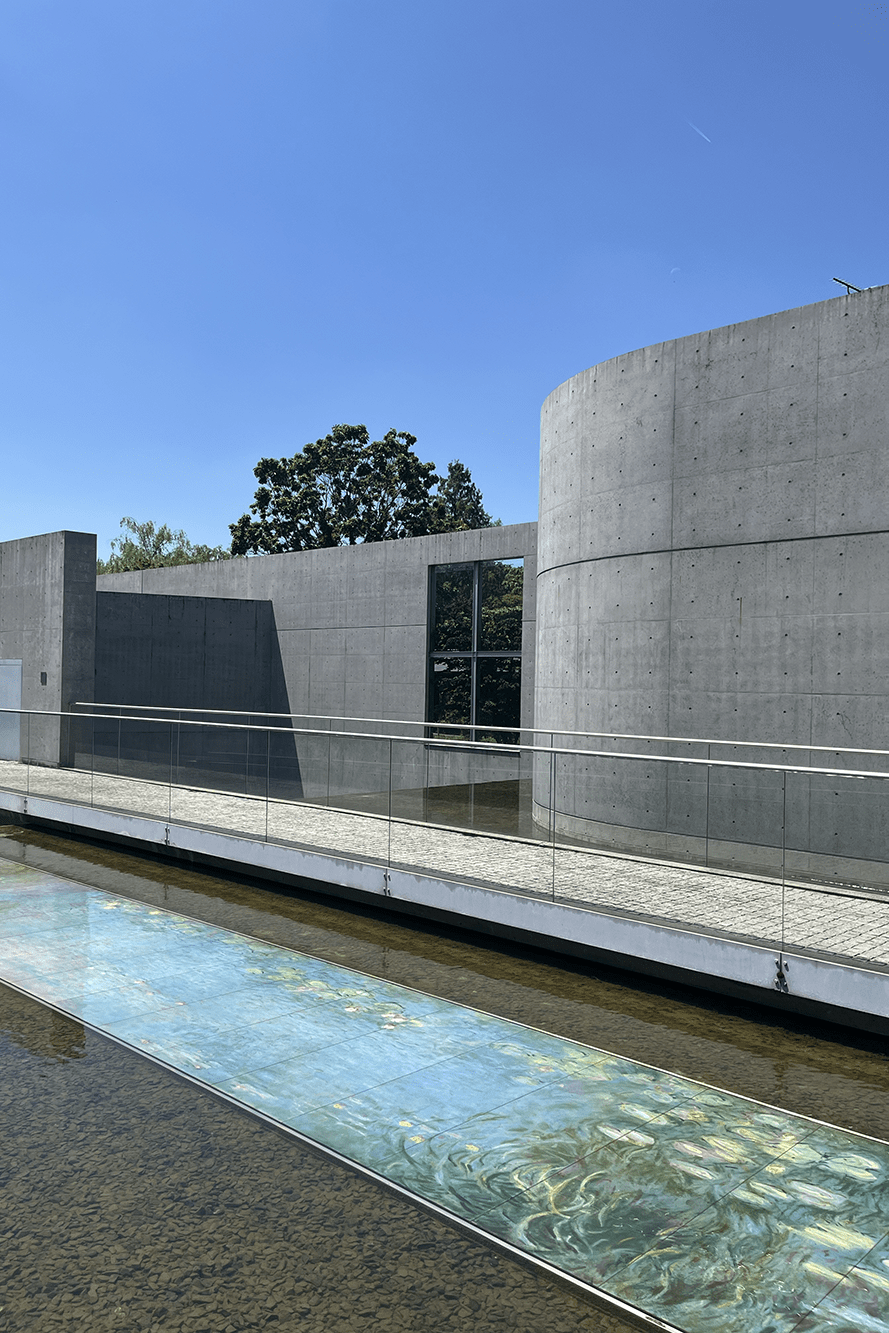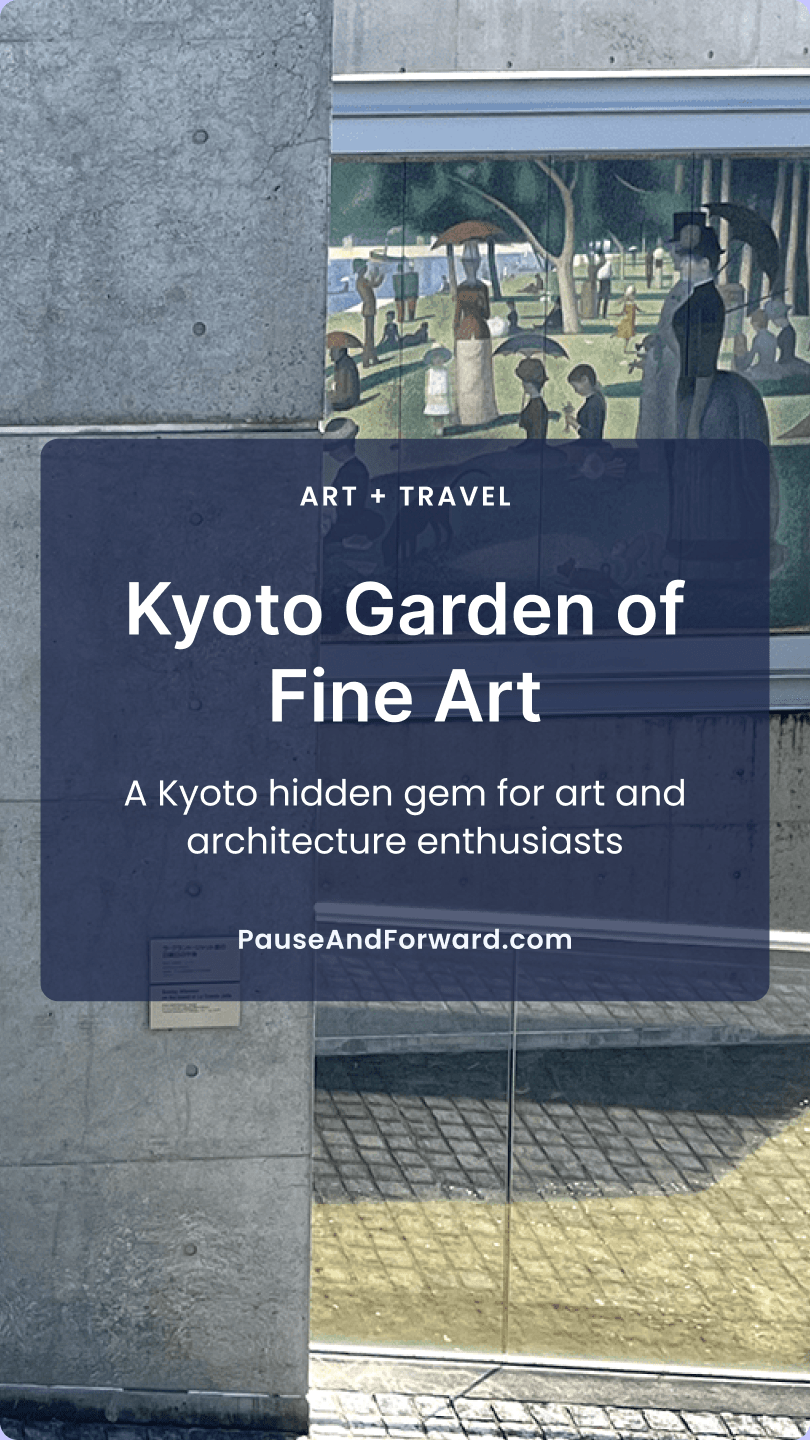Japan Travel Story: Garden of Fine Art Kyoto, A Hidden Gem for Art and Nature Lovers
A Kyoto hidden gem 40 minutes away from the touristy Gion neighborhood.
Located right next to the Kyoto Botanic Garden, the Garden of Fine Art is located about 40 minutes north of the famous Gion neighborhood in Kyoto. It is easily accessible by public transport: take the local Karasuma train line to Kitayama Station or take the local bus, such as City Bus 4 and 205, towards the Kyoto Botanical Garden.
Ideal for solo travelers and art lovers looking for a less crowded destination in Kyoto, the Garden of Fine Art is also ideal for families with kids. Here, parents do not have to worry about their kids touching or running into any precious artwork.
When Fine Art Meets Modern Architecture and Porcelain Tiles
The Garden of Fine Art Kyoto is an outdoor gallery experience that combines site-specific reproductions of some famous modern art and fine art pieces with an outdoor gallery architecture designed by Tadao Ando.
There are 8 famous artworks replicated here including Monet’s Waterlilies–Morning, Michaelangelo’s Last Judgement, Leonardo da Vinci’s Last Supper, Van Gogh’s Road with Cypresses and Stars, Seurat’s A Sunday on La Grande Jatte, and Renoir’s On the Terrace.
They are replicated in porcelain tiles, a feat that should be appreciated in person. The way the tiles interact with sunlight and the rippling water creates an ephemeral experience in the artwork – every moment is different.
Designed by Tadao Ando opened in 1994, the garden is designed with the intent of creating an experience of viewing paintings outdoors, instead of the conventional museum galleries with white walls and controlled, artificial lighting.
The architecture definitely adds interest to the garden’s experience. Although it is called a “garden” there were moments when it felt like I was indoors. The architecture is full of tall, sharp angular walls, some with cut-outs serving as windows to the greeneries and water features beyond the “garden” or as a frame to the artworks on the walls beyond.
A ubiquitous roadside sign leads to Monet’s Waterlilies in a real pond of water.
The ticketing lobby and “entrance” is a very humble experience yet very intentional. metal lettering on a stone pillar by the roadside marks the entrance of the Garden. the ticketing lobby is basically a small booth. Pedestrians walking by would easily miss this ticketing booth. I did.
The main entrance experience is the replica of Monet’s waterlilies, a long vertical piece installed horizontally, submerged in a very shallow glass pool of water.
It might be a literal juxtaposition of waterlilies, the immediacy of Monet’s impressionistic painting style and the real flowing of water but observing the painting’s distortion as the water over it moves fluidly over it is quite a poetic visual experience.
As visitors move through the walking pathway, more pieces are revealed and the architecture also seemed to become more complicated. Narrow staircases and narrow shaded walkways led visitors to the deepest end of the “garden” where Michaelangelo’s Last Judgement is installed.
A larger-than-life replica serves as the highlight of this garden art experience.
The highlight of the Garden is definitely Michaelangelo’s Last Judgement replica.
This work is a replica that is almost the exact size of the original and is also recreated with porcelain tiles. Occupying the largest wall in the Garden, at more than 11m in height, it was a dramatic, almost overwhelming visual art experience.
Visitors can view it from the ground level, as well as on their way up, towards the exit. On one side of the artwork is a shallow water feature like a mini waterfall cascading down a concrete wall. On the other side are large windows revealing an abundance of greenery outside. It is definitely a grand gesture in the experience design of the garden.
An impactful and memorable experience despite its scale
The garden is not large compared to a typical art museum, and it is small compared to a typical garden in Japan. However, the architecture and its experience design are well executed and thought-out so that the overall experience is still enjoyable and impactful yet not exhausting at all.
At the end of the visit, visitors will still have plenty of energy to explore the nearby attraction: Kyoto Botanic Garden, and try out local food options in the neighborhood, which are still not touristy at all, which I appreciate.
A warm local soba meal to end the visit.
I managed to get a seat at a soba restaurant nearby, a 5-minute walk from the Garden. I had to wait in line for about 20 minutes, but it was totally worth it. Prices were more affordable compared to the more touristy parts of Kyoto. Also, most of the patrons in the restaurants are locals, which is a good sign that the place is legit!
The place is called Yoshimura soba, 107 Kamigamo Iwagakakiuchicho, Kita Ward, Kyoto, 603-8053, Japan. Google Link
A set of tempura soba from Yoshimura is a perfect wrap to the trip.
Found this helpful? 📌 Pin the images below to save it for later and share the inspiration with others! ❤️














